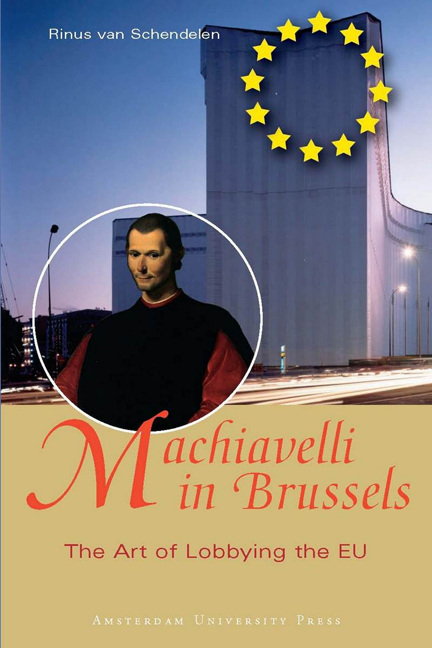Book contents
- Frontmatter
- Contents
- Detailed contents
- Preface
- List of Figures
- List of Abbrevatiations
- 1 The Europeanisation of Public Affairs
- 2 The Playing Field: EU Common Decision-Making
- 3 Pushing the Buttons of ‘Brussels’
- 4 Managing the EU Arena
- 5 Managing the Home Front
- 6 Managing the Fieldwork
- 7 The Limits of EU Public Affairs Management
- 8 Lobbying and EU Democracy
- References
- Index
2 - The Playing Field: EU Common Decision-Making
Published online by Cambridge University Press: 14 January 2021
- Frontmatter
- Contents
- Detailed contents
- Preface
- List of Figures
- List of Abbrevatiations
- 1 The Europeanisation of Public Affairs
- 2 The Playing Field: EU Common Decision-Making
- 3 Pushing the Buttons of ‘Brussels’
- 4 Managing the EU Arena
- 5 Managing the Home Front
- 6 Managing the Fieldwork
- 7 The Limits of EU Public Affairs Management
- 8 Lobbying and EU Democracy
- References
- Index
Summary
Deus Ex Machina
In the previous chapter, integration was defined as bringing parts together into a larger whole and, specifically, as managing or settling irritating differences. This accommodation may take place, of course, through the five old practices referred to, such as leniency, fighting and negotiation. But through a permanent machinery of common decision-making the many irritating differences might be settled more effectively and efficiently. The EU is this kind of machinery. At its input side it takes on board the many issues from the public and the private interest groups. Through its procedures and practices it can settle many an issue, at least provisionally. This peaceful accommodation of irritating differences can be seen as its ultimate product. Many stakeholders intervene in the production process, especially at the most concrete dossier level. Of course, whether they apply the new practices of public affairs management or not, they may also still apply some of the old practices, except that fighting is now only a matter of spirit. The common machinery is, however, more than a new container for the old practices. It has its own mechanisms, which are appreciated for their assumed higher effectiveness and efficiency. Integration is like a goddess, in our case Europa, which emerges from the machinery.
The organisation of this machinery for integration is not static, but highly dynamic. Its current functioning is quite different from, for example, its oldest forerunner, the European Coal and Steel Community (ECSC, 1952), and each subsequent variant has taken a different approach. The machinery is, in fact, permanently in development. This should not be surprising, given the fact that the EU is quite a young political system, being almost of the same age as the average mid-African developing state. The two and frequently interdependent sources of its development are the well-intended reconstructions of its architecture and the modes of life of its inhabitants.
At irregular times the member-state governments agree upon a new blueprint, called Treaty [Edwards and Pijpers, 1997; McDonagh, 1998]. They re-engineer or reconstruct the machinery. For example, they allocate more formal powers to the European Parliament (EP) or they open up new policy areas for common decision-making.
- Type
- Chapter
- Information
- Machiavelli in BrusselsThe Art of Lobbying the EU, pp. 51 - 90Publisher: Amsterdam University PressPrint publication year: 2004



